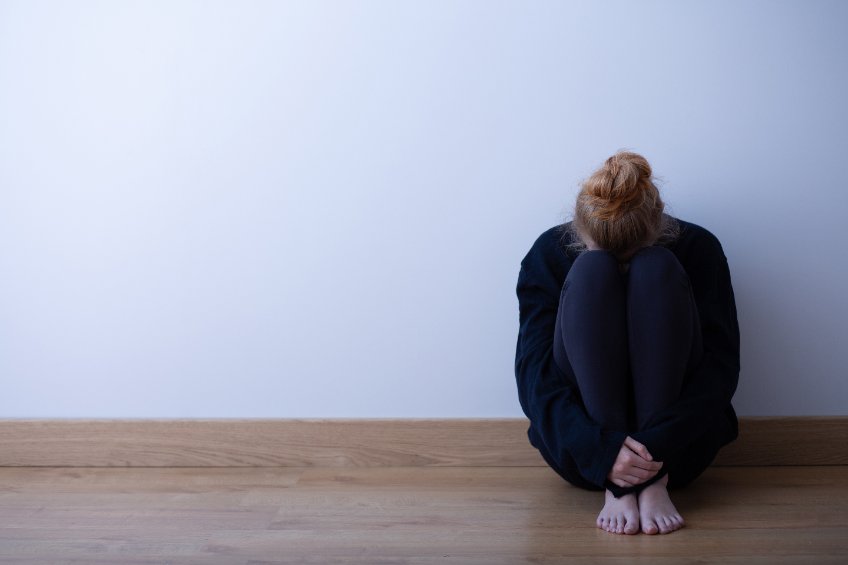More than half a million Americans have died from COVID-19. Thousands more suffered from financial losses compounded by businesses, schools and daycares shutting down. The fallout of COVID-19 is real—and for a subset of Americans, it’s a textbook trigger for post-traumatic stress disorder, or PTSD.[i] Healthcare professionals have been disproportionately traumatized during the COVID-19 pandemic. Between rising death tolls, ineffective treatments and even inadequate personal protective equipment, healthcare professionals have been in survival mode for more than 15 months.

PTSD is a psychological condition that occurs on the heels of a traumatic event, ranging from a natural disaster to the death of a loved one to a global pandemic. Perhaps best known as a disorder that strikes war veterans, PTSD can happen to anyone, regardless of their age, ethnicity, or gender.
“It’s normal to have a fear response to something traumatic. Typically, that fear response diminishes over time. The intensity of the memory fades and we move on with our lives, “says Dr. Itai Danovitch[ii]. “In PTSD, the memories don’t fade. They feel very present and can intensify over time and they can influence our thoughts, emotions and our ability to function.”
PTSD can arise within days, weeks or even years of a traumatic event, such as a rape, terrorist act or serious accident – including the ramifications of COVID-19.
PTSD symptoms include:
- Intrusive memories. One relives a traumatic event through flashbacks, nightmares, and involuntary memories. Difficulty sleeping often occurs due to intrusive thoughts and dreams.
- Avoidance behaviors. We tend to avoid people, places, activities, and situations that could trigger a distressing memory. “Avoidance is a protective strategy, but it protects us at a cost,” Dr. Danovitch says. We may resist talking about what happened and begin to feel detached or isolated from other people.
- Hyperarousal and reactivity. One tends to startle easily and have a strong reaction to ordinary sensory experiences, such as loud noises or a light touch. A combat veteran who has PTSD, for example, may hear a staccato sound and immediately react as if it’s gunfire.
- Mood disturbances. We often suffer from distorted thoughts and feelings of sadness, guilt, or fear. It is not uncommon for people with PTSD to have angry outbursts, behave recklessly or in a self-destructive manner, or be highly irritable.
To be diagnosed with PTSD, these symptoms must persist for at least one month and interfere with daily functions, relationships, and quality of life. In some cases, PTSD symptoms persist for months and sometimes years, and PTSD may coexist with other psychological problems, such as depression, anxiety, and substance abuse.[iii] It is also important to note that not everyone who experiences a terrifying or life-threatening event will develop PTSD. Many individuals experience tremendous trauma without ongoing distress and suffering.
One known trigger: COVID-19. Up to one-third of people who experience the sensation of not being able to breathe, as in severe cases of COVID-19, develop clinical PTSD after those experiences.
“Studies show that the experience of being hospitalized—being confused and frightened and feeling like you’re drowning—is traumatizing,”
Dr. Danovitch says.
Treating PTSD
The main treatments for PTSD are medications, psychotherapy, or a combination of both strategies.

Standard medication therapy is the use of selective serotonin reuptake inhibitors (SSRIs) and antidepressants Each will improve mood and control symptoms. Individuals suffering from sleep disturbances may also use prescription or over-the-counter sleep medications. There’s some emerging evidence to suggest that mind-altering medications such as ketamine and MDMA-assisted therapy can help patients with PTSD.[iv]
With standard psychotherapy for PTSD, there are two key approaches:
- Exposure therapy: This process desensitizes fear response by gradually exposing the individual to the trauma in a safe, controlled environment. Over time, and with training, patients learn to withstand the response to that traumatic trigger.
- Cognitive restructuring: With cognitive restructuring, the patient learns to evaluate thought patterns and emotional responses. For example, one may feel guilt or shame about something that isn’t their fault. “The meaning we put on things, the stories we tell ourselves and the coping skills we use can have a huge effect on whether we feel empowered or victimized,” Dr. Danovitch says.
While there’s still a stigma around mental health issues, the traumatic pandemic we’re beginning to emerge from has shined a light on the importance of mental and emotional health. Its prevalence in our healthcare industry is emerging as a real, yet treatable phenomenon – and should be taken seriously by all healthcare professionals.
Quality Content
Our courses are written by Sleep Medicine and Respiratory Care Industry Leaders with relevant topics that are engaging. All Courses are Peer and/or Physician Reviewed! We have courses approved by the American Association for Respiratory Care (AARC) for CRCE credits. We have courses approved by the Board of Registered Polysomnographic Technologists (BRPT) for CSTE credits. We have courses approved by the Canadian Society Of Respiratory Therapists (CSRT) for CPD credits.








